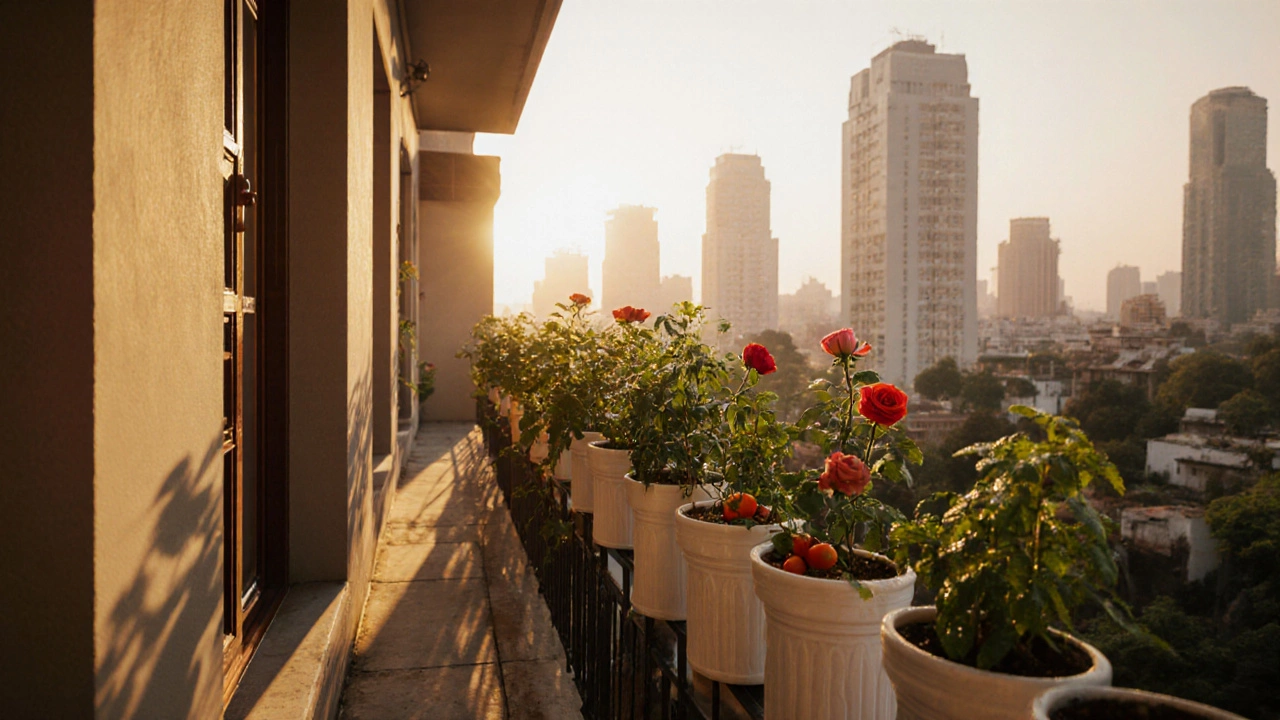Learn which balcony direction captures the most sunlight, how latitude and seasonal sun paths affect light, and get practical tips for choosing plants and maximizing exposure.
Sunlight Direction for Gardens: How Light Path Affects Plant Growth in India
When you think about sunlight direction, the path the sun takes across your garden or balcony throughout the day. Also known as sun path, it determines whether your plants get the gentle morning glow or the harsh afternoon blaze—two very different conditions that can make or break your garden. In India, where temperatures climb fast and balconies face every direction, getting sunlight direction right isn’t optional—it’s the difference between thriving plants and wilting ones.
Most gardeners focus on how much light a plant needs—full sun, partial shade—but few check sunlight direction, whether the sun hits from the east, west, or south. For example, a hydrangea placed where it gets hot afternoon sun from the west will burn its leaves, even if it’s labeled as a "sun-loving" plant. But the same plant in morning light from the east? It’ll bloom like crazy. Similarly, basil and other herbs need at least 6 hours of direct light, but they do best with morning sun. The afternoon sun in Indian cities like Delhi or Chennai is too intense—it cooks the soil, dries out roots, and stresses the plant. Your south-facing balcony gets the most consistent light all year, while north-facing ones stay shaded. East-facing spots are ideal for most vegetables and flowers; west-facing? Save them for heat-tolerant plants like cactus or marigolds. This isn’t just theory. A study from the Indian Council of Agricultural Research found that tomato yields on east-facing balconies were 30% higher than on west-facing ones, simply because of cooler afternoon temperatures.
You don’t need fancy tools to figure out your sunlight direction. Just watch your balcony or garden for a day. Note where the sun hits at 9 AM, 1 PM, and 5 PM. Mark those spots with tape or chalk. Then match those zones to what your plants need. If you’re growing year-round bloomers like crossvine or lantana, they’ll thank you for morning light. If you’re trying to grow leafy greens like spinach or coriander, they’ll bolt if they get too much hot sun—so keep them in partial shade, especially after noon. Even small changes matter: moving a potted plant a foot to the left can save it from scorching. The right sunlight direction doesn’t just help plants grow—it cuts down on watering, reduces disease, and means less work for you.
What you’ll find below are real, tested tips from gardeners who’ve learned the hard way. From fixing sunburned hydrangeas to choosing the best herbs for your balcony’s light angle, these posts give you the exact steps to work with sunlight direction—not against it.
